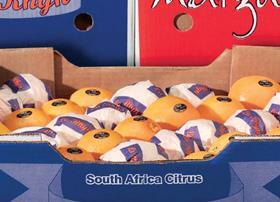
South Africa has shipped significantly less citrus to Europe this season that it did in 2013 and far more to Asia, according to new figures published by the country’s Citrus Growers’ Association.
Growers ceased packing all but a very small volume of citrus fruit to the EU in early September, after concerns were raised that Brussels might be about to suspend imports over the on-going Citrus Black Spot issue.
A fall in demand within European markets is also understood to have contributed to the downturn.
“Difficult conditions in the EU have resulted in 14 per cent less South African citrus going into that market,” CGA chief executive Justin Chadwick explained.
Both Valencia and navel volumes decreased by 14 per cent, while grapefruit volumes fell by 33 per cent.
Soft citrus volumes to the EU were up slightly (2 per cent) however, and lemon volumes rose 29 per cent, reflecting the very small volume shipped to the EU in 2013.
“This can be compared to an export volume decrease (from South Africa to all markets) of 3 per cent; grapefruit down 16 per cent, navels down 1 per cent and Valencia down 5 per cent while lemons increased by 22 per cent and soft citrus increased by 15 per cent,” Chadwick observed.
The fall in citrus sendings to Europe was more than matched by a 29 per cent increase in the volume exported to Asia, which took 315,000 tonnes compared with 240,000 tonnes the year before.
Grapefruit volumes to Asia increased by 10 per cent, lemon and soft citrus volumes doubled while navel volumes increased by 44 per cent and Valencias by 15 per cent.
Export volumes sent to the Middle East (330,000 tonnes), North America (105,000 tonnes) and Africa (15,000 tonnes) all remained static.
As in the EU, volumes to Eastern Europe also fell, by 10, with grapefruit down 10 per cent, navels down 31 per cent; soft citrus down 13 per cent and Valencias down 4 per cent. Lemons increased by 2 per cent.



